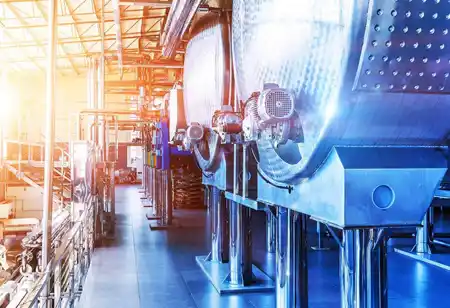The chemical industry's digital transformation is no longer an option but a necessity for remaining competitive and sustainable in an ever-changing world
FREMONT, CA: In a world driven by rapid technological advancements, the chemical industry is undergoing a profound digital transformation that promises to revolutionize how chemicals are manufactured, monitored, and managed. This article explores the key drivers, trends, and implications of the digital revolution sweeping through the chemical sector.
The Digital Transformation Imperative
The chemical industry's digital transformation is driven by a convergence of factors, including technological innovations, sustainability imperatives, and the need for increased efficiency and competitiveness.
Key Drivers of Digital Transformation:
1. Advanced Analytics: The proliferation of data analytics tools and machine learning algorithms enables chemical companies to extract valuable insights from vast datasets, optimizing processes and decision-making.
2. Internet of Things (IoT): IoT devices are being deployed throughout chemical facilities to monitor equipment, track chemical reactions, and gather real-time data on various parameters, enhancing operational efficiency and safety.
3. Artificial Intelligence (AI): AI is employed to improve process control, predict equipment failures, and optimize supply chain management, ultimately reducing costs and increasing productivity.
4. Sustainability Goals: The chemical industry's commitment to sustainability is driving the adoption of digital technologies to reduce environmental impact, optimize resource usage, and develop eco-friendly products.
5. Enhanced Safety: Digital tools and simulations enable chemical companies to model and test safety scenarios, ensuring a safer working environment for employees.
Digital Transformation Trends
Several transformative trends are shaping the chemical industry's digital evolution:
1. Smart Factories: Chemical manufacturing facilities are evolving into smart factories equipped with IoT sensors and automation technologies that enable real-time monitoring and control of processes.
2. Predictive Maintenance: Predictive analytics and AI-driven algorithms are used to forecast equipment failures, allowing for proactive maintenance and minimizing downtime.
3. Digital Twins: Digital twins, virtual replicas of physical chemical processes, are created using real-time data and simulations. They enable companies to optimize processes, troubleshoot issues, and conduct virtual experiments.
4. Supply Chain Visibility: Digital tools provide end-to-end visibility into the supply chain, allowing companies to manage inventory, track shipments, and respond swiftly to disruptions.
5. Sustainable Product Development: Digital tools aid in the development of sustainable products and materials, helping companies meet regulatory requirements and consumer demands for eco-friendly solutions.
Implications for Sustainability
The chemical industry's digital transformation is closely intertwined with sustainability goals. Digital technologies are instrumental in advancing green chemistry, circular economy practices, and reduced environmental impact.
1. Green Chemistry: Advanced simulations and AI-driven molecule discovery accelerate the development of green chemicals with minimal environmental impact.
2. Circular Economy: Digital technologies enable better tracking and management of materials throughout their lifecycle, facilitating recycling and waste reduction.
3. Environmental Monitoring: IoT sensors and data analytics are employed to monitor emissions, water usage, and energy consumption, supporting environmental compliance and sustainability reporting.
Challenges and Opportunities
While the benefits of digital transformation in the chemical industry are vast, challenges persist:
1. Cybersecurity: As digitalization increases connectivity, it also heightens the risk of cybersecurity threats. Protecting sensitive data and critical infrastructure is a top priority.
2. Skill Gap: Building a workforce with the necessary digital skills and expertise is a challenge. Continuous training and upskilling are essential.
3. Data Management: Managing and interpreting the vast amounts of data generated by digital tools require robust data management and analytics capabilities.
4. Regulatory Compliance: Ensuring that digital practices align with evolving regulations is crucial. Companies must navigate the regulatory landscape effectively.
Conclusion
The chemical industry's digital transformation is no longer an option but a necessity for remaining competitive and sustainable in an ever-changing world. The adoption of advanced analytics, IoT, AI, and digital twins is reshaping how chemicals are produced, making processes more efficient, sustainable, and safer. As the industry continues its journey towards a digital future, it will play a pivotal role in driving innovation and sustainability in the global chemical sector, ultimately contributing to a more resource-efficient and environmentally responsible world.

